
Marine Engineer Officer
Skip to section:
About the role Career progression and training Salary and benefits Entry requirementsMarine Engineer Officers are the Navy’s experts on ship’s structure, propulsion, power generation, hydraulic and habitability systems.
- ServiceNavy
- SpecialisationEngineering and Technical Trades
- LocationDevonport
-
Starting Trade Training$65,075
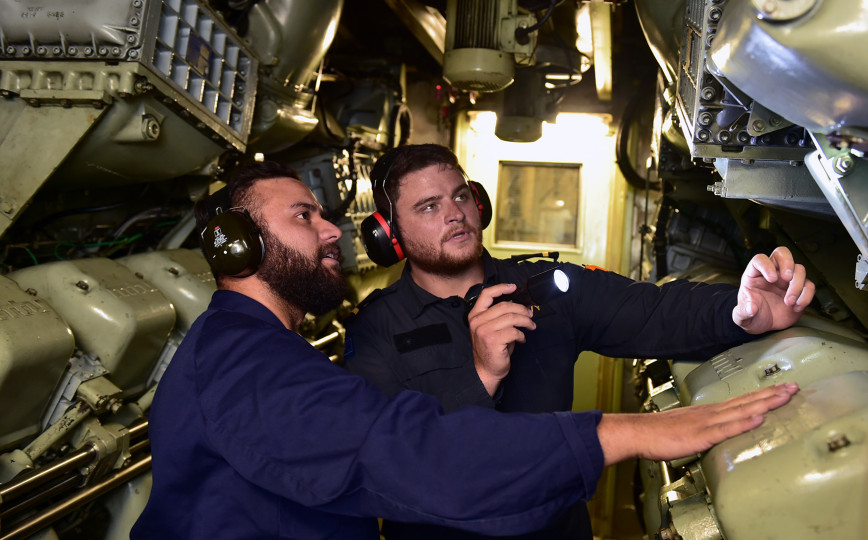
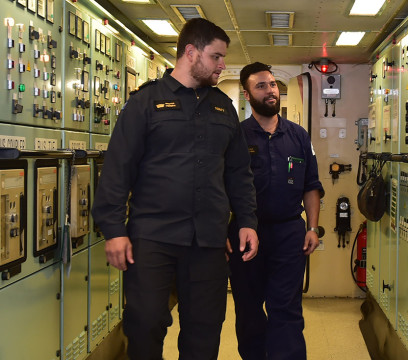
About the role
On board a ship you will lead a team of skilled technicians who operate and maintain this diverse range of equipment. You will also be the critical incident manager in the ship’s response to fire-fighting and damage control situations.
Leadership and the ability to communicate effectively in a multi-disciplinary environment will be your key qualities. You are also likely to be a logical thinker, work well in a team, and seek challenging work environments.
Job on base
With shore based positions, located in both Auckland and Wellington, you, as a Marine Engineer Officer will ultimately be responsible for the through-life maintenance support of naval ships, procurement projects, as well as the management, welfare and training of our officers and sailors.
Your career will be managed so that you are exposed to a diverse range of positions such as project management, equipment procurement or upgrades, system performance analysis and maintenance planning. Rotating regularly through these roles, you will develop a broad experience base of marine engineering tasks. Additional specialised training will be provided in fields such as project management, to ensure you have the skills set required for each job.
Job on deployment
Once qualified you will lead a Ships Marine Engineering Department with a team of up to 35 skilled technicians. You will be responsible directly to the Ships Commanding Officer for the performance and availability of the systems, equipment and personnel under your charge, including their welfare and training. In this position you will be part of the ship’s senior leadership team, responsible for achieving the government’s objectives. While deployed there are always excellent opportunities to experience different ports and environments in New Zealand and explore exotic international locations and cultures overseas.
As Marine Engineers, we have a broad knowledge of all the systems on board. We keep the shafts turning, we keep the lights on, we keep the galley running, to ensure the ship can do whatever it is tasked to do.
Adin Martinus
Sub-Lieutenant
Career progression and training
Career Progression
Basic training
Job Training
Ongoing Training
After graduating basic Officer training and six months experience on-board a ship, you will complete the Systems Engineering and Management Course (SEMC) at the Royal Naval School of Marine Engineering in Portsmouth, UK; or complete the Marine Engineering Application Course at the Royal Australian Navy's Engineering Training Facility in Melbourne, Australia, learning the principles of marine engineering and management of a ship’s engineering department.
The next phase of your career will be on-the-job training, on board a naval vessel, under the supervision of a senior Marine Engineer, where you will be mentored to achieve the Marine Engineer Officers’ Charge Qualification (MCQ). This qualification recognises that you have the theoretical and practical knowledge and skills required to take sole charge of a ship’s Marine Engineering Department.
You will then rotate through various shore based engineering positions, to broaden your experience before returning to sea as the senior Marine Engineer.
Junior Officer Common Training (JOCT)
(21 weeks) Location: Devonport Naval Base
The objective of JOCT is to provide you with the core skills of military, mariner, and leadership to be an effective Officer in the Navy. The course is completed in two phases of training that train key areas of development.
Phase 1 – Introduction
This phase focuses on ‘followership’ and teamwork. Trainees are instructed in basic service knowledge, discipline, parade, and kit preparation. Physical Training will be conducted at all times throughout training to develop a high level of physical and mental fitness that promotes morale, good health, and good habits. This phase will cover various topics including:
- Physical Fitness
- Service Knowledge
- Service Discipline
- Introduction to the Leadership Development Framework
- Damage Control Training
- Weapons Training
- First Aid
- Basic seamanship training
- Moving to advanced application
Phase 2 – Fit for Sea
The second phase of training will focus on attributes of being in the Navy in preparation for operational service at sea. Trainees will be taught about the roles and responsibilities on board an RNZN ship. Trainees will also spend time ashore conducting academic and leadership training to further develop as a Naval Officer. This phase will cover various topics including:
- Sea survival
- Ship familiarisation
- Leadership training
- Communications skills
- Defence and Strategic Studies
Two development streams are offered on completion of basic officer training.
- Scholarship Entry: (see education) Where candidates without tertiary engineering qualifications are sponsored to complete either a Bachelor of Engineering (Honours), or a Bachelor of Engineering Technology.
- Direct Entry: Where candidates with an appropriate tertiary engineering qualification, will be promoted to Sub-Lieutenant, and begin the next available SEMC
Systems Engineering and Management Course (SEMC) or Marine Engineering Application Course (MEAC)
Location: Defence School of Marine Engineering, Gosport, UK; or the Royal Australian Navy's Engineering Training Facility in Melbourne, Australia. (6-8 months) SEMC / MEAC training is recognised as professional development towards registration as a Chartered Engineer.
On return to New Zealand you will be assigned to a New Zealand Navy ship to gain further experience and training towards the award of the Marine Engineer Officers’ Charge Qualification (MCQ), necessary to manage the entire Marine Engineering Department.
The Navy supports Marine Engineering Officers to become Chartered Engineers. There is also a streamlined Masters programme available through the University of Portsmouth.
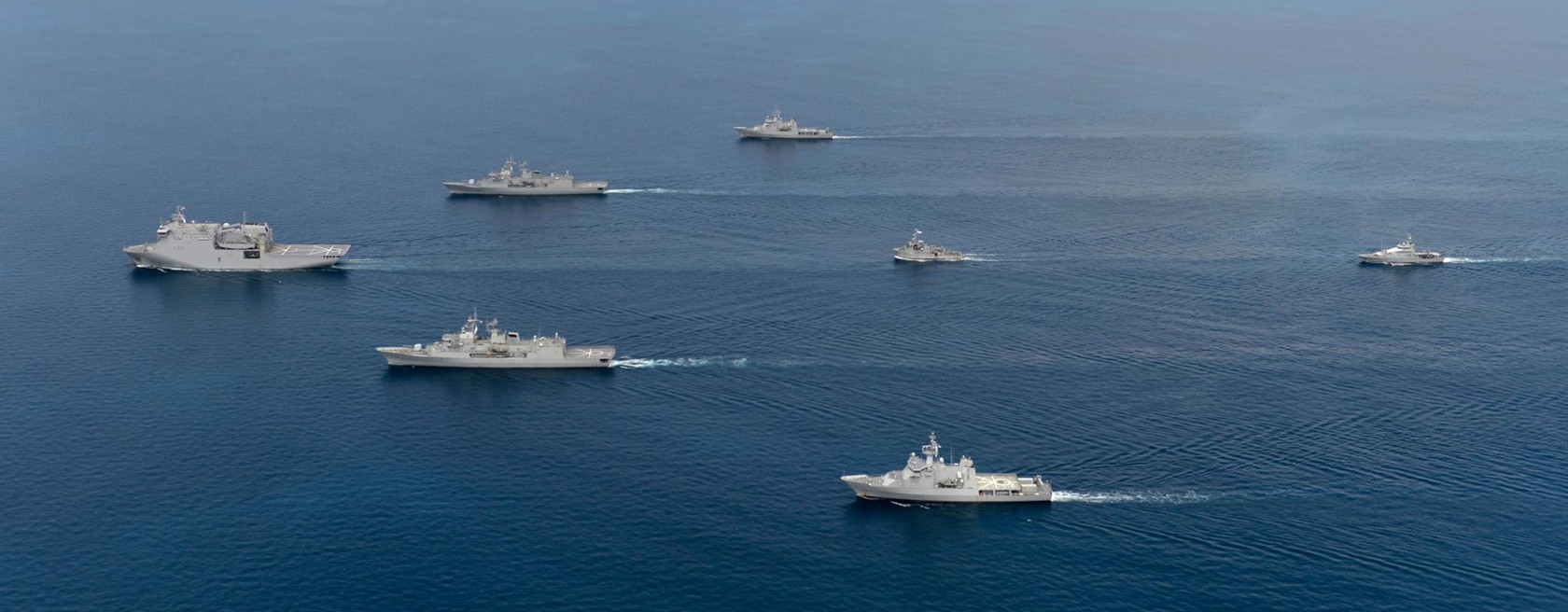
Salary and benefits
Careers in the Navy are well-rewarded, as well as being diverse and exciting. As you become more experienced and move up through the ranks, gaining additional skills and qualifications, you will see your salary rise accordingly.
$50,597
Under Initial Training
$65,075
Starting Trade Training
$183,984
Future Potential Earnings
Figures updated on July 1st 2023
Benefits and allowances
Earn a competitive salary while training or learning your trade, along with additional allowances for time spent in the field, at sea, overseas, or deployed on operations.
In addition to salary and allowances, other benefits of joining the New Zealand Defence Force include:
Access to your Service marae or tūrangawaewae
Sponsored tertiary study programmes at all levels
Free access to gyms and swimming pools on camp and bases
Opportunities to travel
Free and subsidised medical and dental care
Subsidised food and accommodation on camps and bases
Free and subsidised insurance cover
Help to buy a home and save for retirement
Entry requirements
Basics
Education
Fitness and Medical
Citizenship
Period of Service
- Be a minimum of 17 years of age upon entry.
- Be free of any criminal convictions.
- Pass an Officer Selection Board.
Direct entry
Direct Entry applicants need to hold, or be or be in their final year of, a BE(Hons) or BEngTech. Typically applicants specialise in mechanical, electrical or mechatronics engineering, however, applicants from most engineering specialisations will be considered, including Chemical, Process, Materials and Electronics.
Scholarship entry
The Navy offers graduate and undergraduate scholarships for engineering students who demonstrate the qualities required to become a Marine Engineer Officer.
The minimum educational requirement to apply for a scholarship is NCEA Level 3 with 18 credits in Level 3 Mathematics and Physics and University Entrance.
The scholarships are:
- Salary (Tangaroa) Scheme: Become an Officer in the Navy and be paid to study at the University of Auckland, Massey University (Albany Campus), or the Auckland University of Technology on a ‘year for a year’ return of service basis. There will also be an opportunity for one Tangaroa Scheme MEO per year to study naval architecture through the conjoint AUT and University of Tasmania maritime studies programme.
- Bursary (Chatham) Scheme: Study at the university of your choice while the Navy covers your fees and a living allowance on a ‘year for a year’ return of service basis.
- Graduate (Amakoura) Scheme: Study at the university of your choice and, on completion of your degree, you will have approximately a quarter of your course fees reimbursed annually for every year you serve for up to four years. No return of service incurred.
- You must be medically fit for service.
- You must meet the minimum entry fitness standards.
- Colour perception requirements may apply.
There are strict citizenship and security requirements to gain the SV security clearance required for this trade. You must be free of any criminal convictions.
Find out if you’re eligible here.
There is no minimum period of service you are required to commit to the Navy.
The exception to this is the salaried and bursary university scholarship schemes which incur a year for a year return of service. Therefore, if the Navy pays for one year of your tertiary qualification then you will have to give a one year return of service. If they pay for two years you will have to give two years return of service and so on. The SEMC also incurs a two year return of service, however, this occurs concurrently with any return of service from your tertiary qualification (they do not add together).
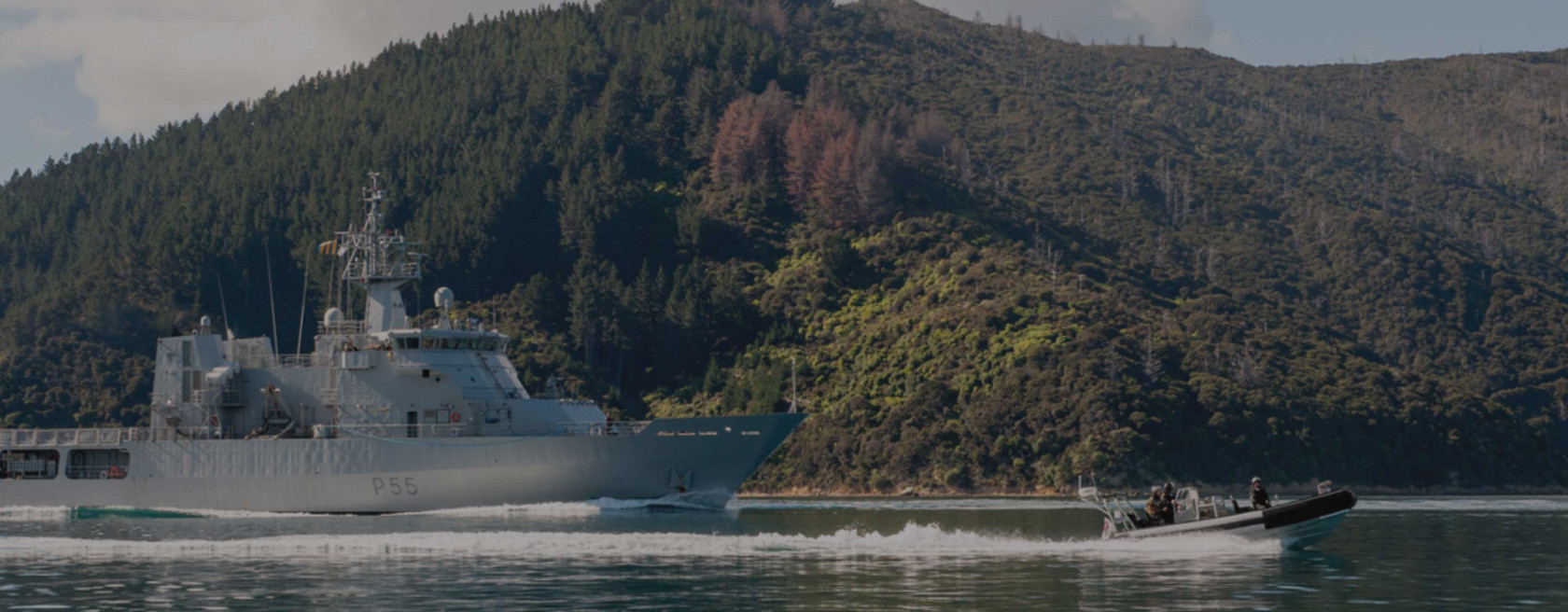
Ready to start your Navy career?
Other jobs you might like
You can also browse jobs by specialisation to narrow down your search.
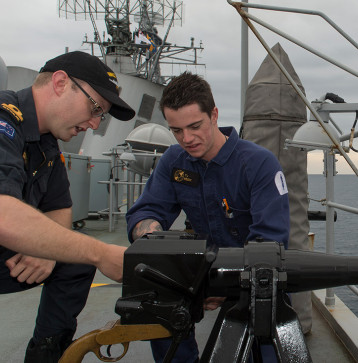
Closing Soon
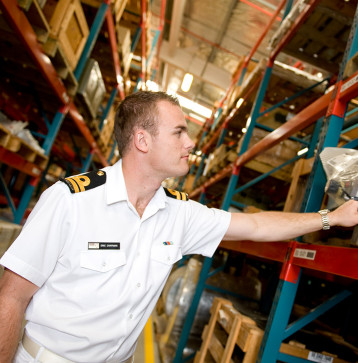
Closing Soon
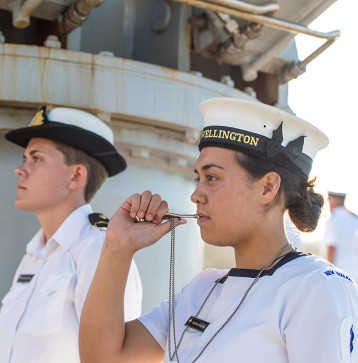
Applications Open
